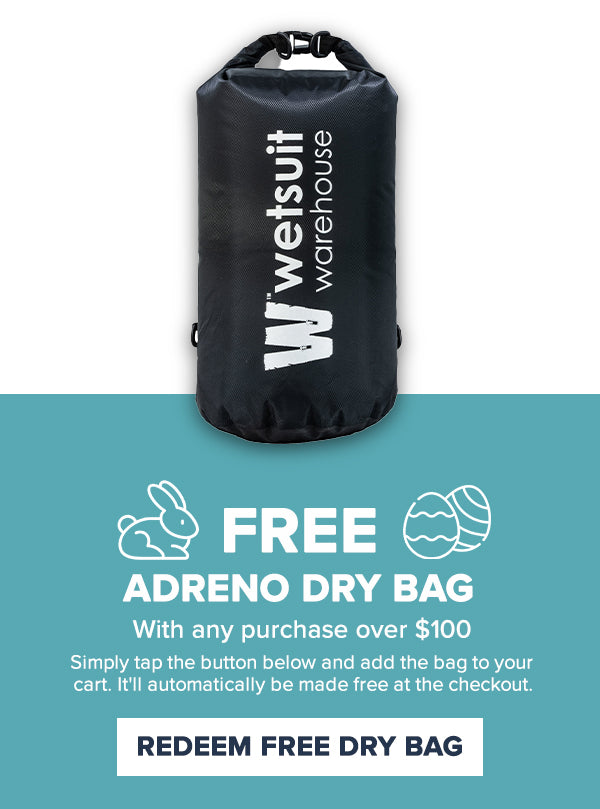Wetsuit Vest FAQ
1. Why do I need a wetsuit vest?
There are a number of reasons why a wetsuit vest can be a beneficial piece of apparel. Firstly this can add an extra layer of insulation to your wetsuit to help keep you warm. Secondly they can help make it easier for you to get your wetsuit on and off by reducing friction. Lastly wetsuit vests can help to protect your skin from rubbing and chaffing caused by wetsuits.
2. How can I stay warmer both in and out of the water when surfing?
Surfers and wake boarders spend a lot of time in and out of the water. It is important that you have a wetsuit that is warm enough to keep your body temperature regular. Otherwise you can start to get cold and not only will this spoil your session but it could also make you ill. Wetsuit vests can help boost the thermal insulation of your wetsuit and keep your vital areas warm. These vests can help to reduce both water and wind chill and you can also improve warmth even further with a wetsuit hood, gloves and boots.
3. Will wetsuit vests affect freedom of movement?
Wetsuit vests are thin items of apparel that fit close to the skin. They can be worn under wetsuits and do not reduce flexibility. Vests can boost the effectiveness of lightweight wetsuits without the additional bulk of a thicker neoprene material. This can be a good choice for active water sports such as surfing and wake boarding where flexibility is a key factor.
4. Can you wear wetsuit vests on their own?
Many long distance swimmers wear wetsuits vests over thin swimming suits to provide additional warmth when out in the water. This can be a good alternative to wearing a full wetsuit in warmer water conditions. Unless you have a very good resistance to the cold you will need a full wetsuit in cooler water conditions though.
5. How can I prevent my wetsuit from rubbing?
Wetsuit vests can help to prevent rubbing from your wetsuit across your chest, shoulders and neck areas. This is ideal for people who spend a lot of time in the water as wetsuit rub can become quite painful and uncomfortable over time.
6. What are wetsuit vests made from?
You can get vests in a few different materials. Lycra and Spandex vests provide a very comfortable, close fitting garment that can help to prevent rubbing around the neck and chest areas. These vests can also be worn with swimming suits. If you need additional warmth then 3mm neoprene vests can be worn under a lightweight wetsuit to increase heat insulation. This will make your wetsuit more versatile and means you will not have to buy a different wetsuit for the winter months. For example if you have a standard 3mm wetsuit then a 3mm neoprene vest would turn this into a 6mm wetsuit. This would be much more suitable for colder conditions.
7. How can I make it easier to get my wetsuit on?
Wetsuit vests provide a barrier between your skin and the wetsuit. This helps to reduce friction and make it much easier for you to put your wetsuit on and take it off. You can also get special lubricants to help get your wetsuit on and off. Look for a biodegradable product that is suitable for use with neoprene. You apply this to the sleeves, legs and cuffs to help get your wetsuit on and off. It is important to test this product on your skin before you use it to make sure you are not allergic to it.
8. What are titanium lined wetsuits vests?
Titanium linings are often used with neoprene to increase durability and heat insulation. This does not affect flexibility and this type of lining provides a very comfortable fit. Many top brand wetsuit vests are titanium lined to increase warmth and durability.
9. Can you get long sleeved wetsuit vests?
You can get long sleeve, short sleeve and sleeveless wetsuit vests. Long sleeve versions provide the best heat insulation for colder water conditions. The shorter sleeve and sleeveless versions provide more freedom of movement and are ergonomically cut at the arms for more flexibility.
10. What are rash vests?
Many people have allergies to synthetic materials and neoprene is no acceptation. As most wetsuits are made from neoprene this can make it difficult for people with an allergy to this substance to find a wetsuit to suit them. Rash vests are the ideal solution as they provide a barrier between your skin and the neoprene. This reduces the chances of contact and will prevent rashes from forming. In most cases it is prolonged contact with neoprene on sensitive skin (such as the neck, chest and stomach) that causes the allergic reaction so you should still be okay to handle your wetsuit generally and take it on and off. A neoprene allergy can develop over time and will typically manifest as a sore, red area of skin with rash like bumps. This may also be very itchy and using your wetsuit without a rash vest will worsen the reaction.


